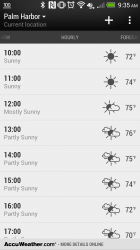The time expressed in surface observations is the time the observation is completed. In order to allow comparison of surface conditions at the same time throughout the world, the groups regulating the collection of hydrometeorological data have established a standard time for taking observations. These observations will have times observed within the 10 minutes preceding the UTC standard time. Hence surface observations for meteorological use have timestamps reflecting 0000, 0300, 0600, 0900, 1200, 1500, 1800, 2100 UTC. Observations taken for use by aviation interests are taken at least once an hour. Some countries specify that aviation observations which may be used beyond the local area will be taken every 30 minutes. For these 30 minute observations, the standard time for taking them will vary from country to country.
Routine forecasts are transmitted according to an international standard and are valid for a specific period of time. Within a bulletin containing forecasts the time of preparation, time of transmission and valid period are expressed. These times [the times of preparation, transmission and the forecast valid time] are expressed in UTC. For instance, most forecasts for airports are prepared and transmitted 30 minutes prior to the beginning of the valid period. Hence, the time in the bulletin heading will be the standard time, usually ending in minutes of zero (00), and the first time within the forecast will be the preparation time and will end in 30, representing 30 minutes after the hour. A four-digit group expressing the valid time of the forecast in even hours will also be included. A forecast ending at midnight will see 24 as the hour and a forecast beginning at midnight will use 00 for the hour.





